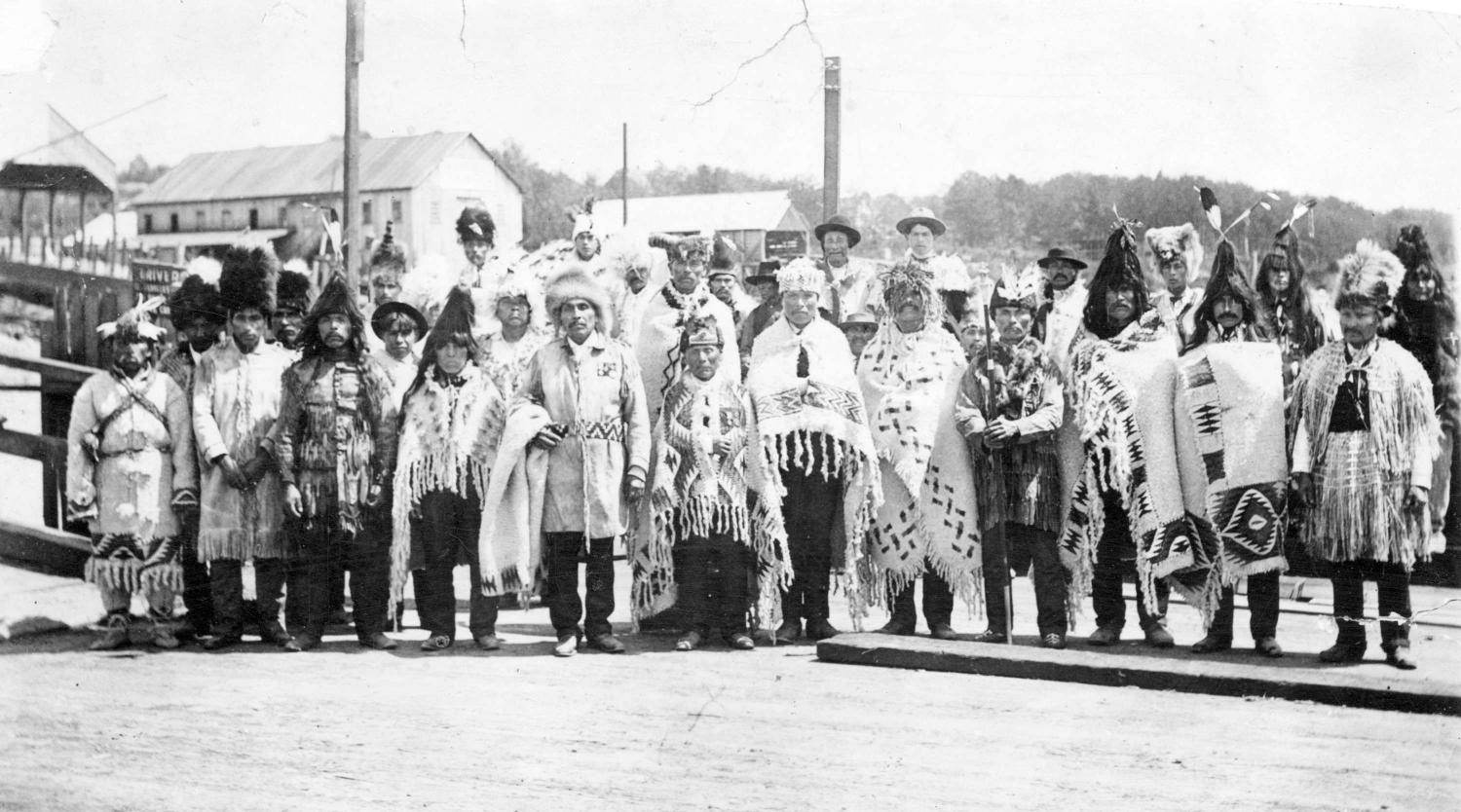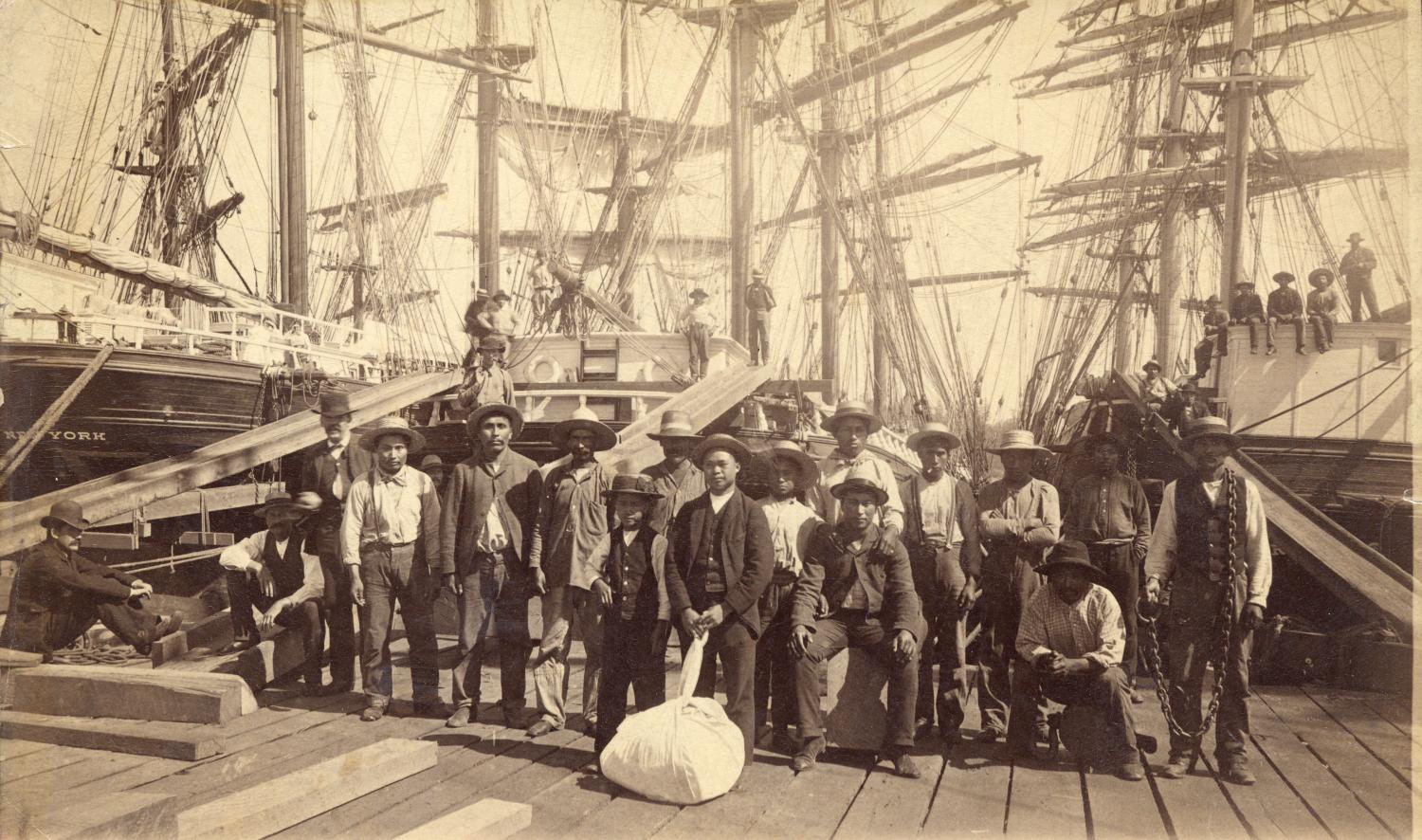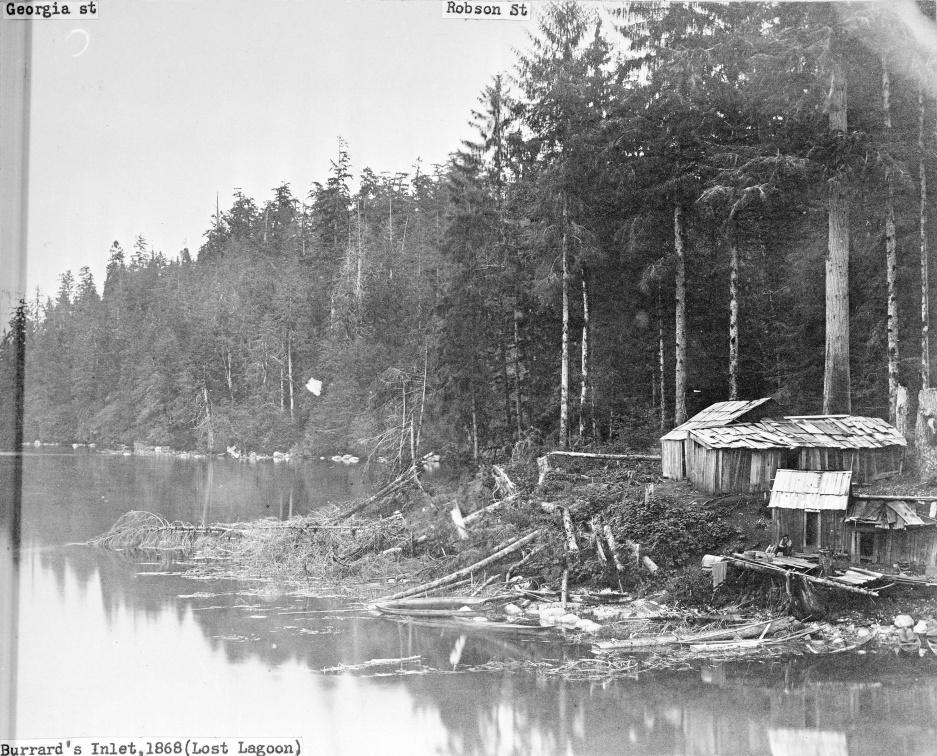The 'Bows and Arrows'
Barred from white unions, Indigenous longshoremen start their own
Date: 1906
In 1863, the first sawmill on Burrard Inlet opened along the body of water's north shore. For the Squamish, Tsleil-Waututh, and Musqueam, whose traditional territory abuts the inlet, the new business brought tremendous change. The introduction of wage labour encouraged Squamish families to move closer to the mill, and a hybrid economy emerged. Squamish men and women worked at the mills while also performing traditional tasks and duties like hunting, gathering and drying food.
The arrival of the Canadian Pacific Railway in 1886 brought even more change. First planned to end in Port Moody, its western terminus ultimately landed in Vancouver. Once again, the Indigenous population along Burrard Inlet saw the land transform in front of them. Grain elevators now towered the shoreline. Warehouses sprung up. New piers jutted out into the water.
Indigenous people continued to take part in the growing economy. The majority of the longshoremen on the Vancouver docks were Squamish and Tsleil-Waututh, usually tasked with the physically-demanding and specialized work of handling cargo. On the waterfront, Indigenous men participated in labour organization and strikes, but they also faced racial discrimination. Most unions excluded minorities from joining their ranks, viewing them as both inferior and an economic threat to white workers.
One major exception was the Industrial Workers of the World (IWW). Founded in Chicago in 1905, the IWW prioritized class, not race. “An Injury to One is an Injury to All,” read its motto. In 1906, a group of Squamish and other marginalized workers applied to start their own IWW chapter, Local 526 — known colloquially as the “Bows and Arrows.” Numbering nearly 60 members in total, meetings were held on the Squamish reserve in North Vancouver. That same year, a delegation of chiefs, including Squamish Chief Joe Capilano, sailed to London to lobby King Edward VII on behalf of B.C.’s First Nations — a trip financed by the money Indigenous men had made on the docks.
The Bows and Arrows union was short-lived, disbanding a year later. But its spirit lived on when Squamish waterfront workers started their own chapter of the International Longshoremen’s Association (ILA) in 1913, Local 38-57. A political awakening had occurred, tying workers’ rights to their own identities as Indigenous men.
Sources:
- Labour Heritage Centre. Working People: A History of Labour in BC - Backgrounder. Labour History Project, 2014.
- Mickleburgh, Rod. "Fitz" St. John: A Longshoreman's Longshoreman. B.C. Labour Heritage Centre, 26 Feb. 2020, www.labourheritagecentre.ca/fitz/.
- Parnaby, Andy. The Best Men That Ever Worked the Lumber': Aboriginal Longshoremen on Burrard Inlet, BC, 1863-1939. Canadian Historical Review, 2006, www.academia.edu/5881523/The_best_men_that_ever_worked_the_lumber_Aboriginal_Longshoremen_on_Burrard_Inlet_BC_1863_1939.





